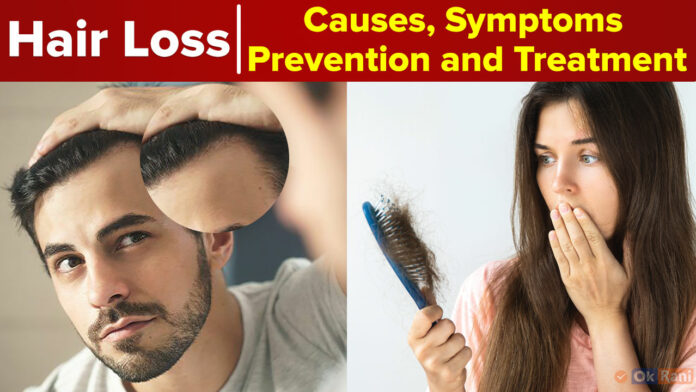Typically, individuals in good health shed around 100 hair strands daily. Hair loss worries many individuals. It can affect both men and women and can be caused by various factors. This article will explore the causes, symptoms, and prevention of hair fall and the available treatments to address this issue.
Table of Contents
What is Hair loss?
Hair loss, or alopecia, is when you lose hair from your head or other body areas. It can be temporary or permanent and may result from a variety of factors. Losing hair can be upsetting for lots of people, affecting how they feel about themselves and their overall health.
Types of Hair Loss
There are several types of hair fall, each with its own underlying causes. Understanding these types is crucial in determining the most appropriate treatment.
1. Androgenetic Alopecia
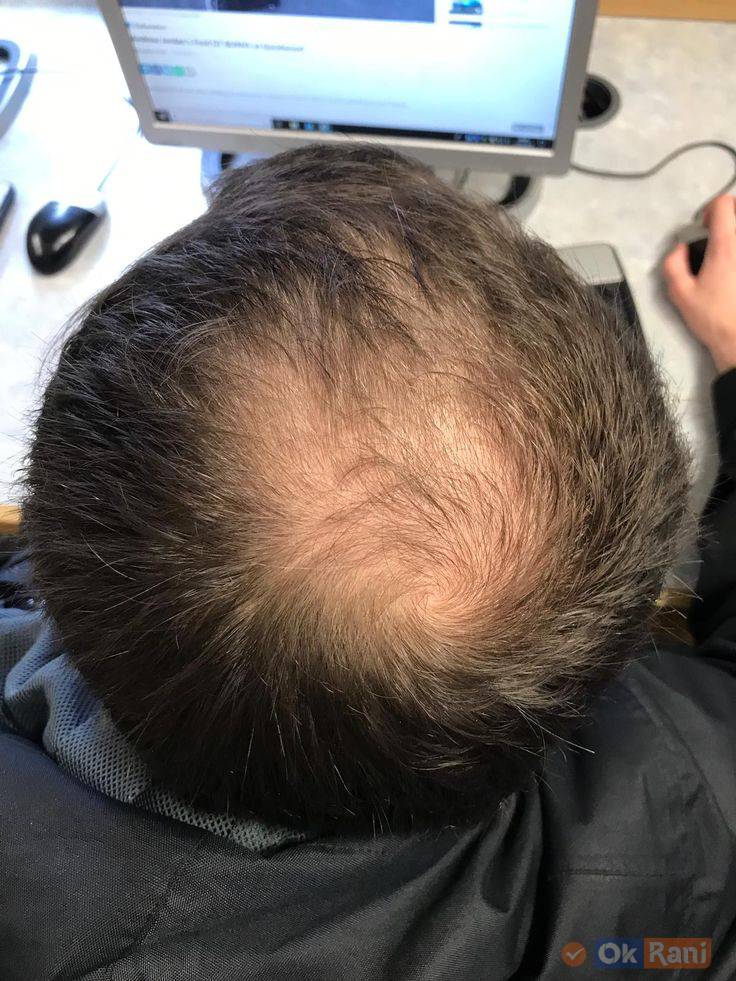
The most widespread form of hair fall is androgenetic alopecia, often called male or female pattern baldness. It is primarily genetic and hormonal, leading to the gradual thinning of hair.
2. Telogen Effluvium
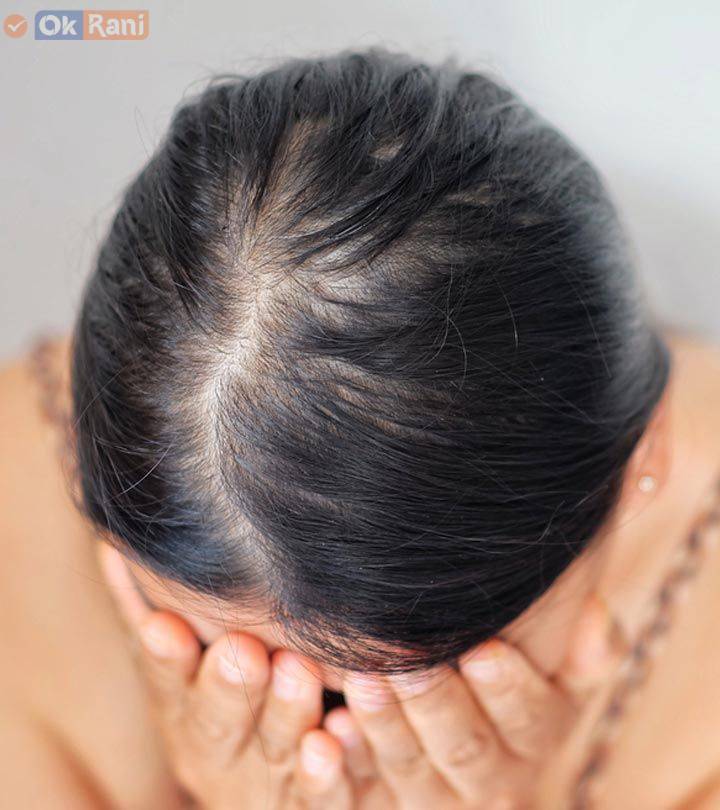
Telogen effluvium is a temporary form of hair fall that occurs due to factors such as illness, stress, or significant weight loss. Hair tends to fall out more than usual during the resting (telogen) phase of the hair growth cycle.
3. Alopecia Areata
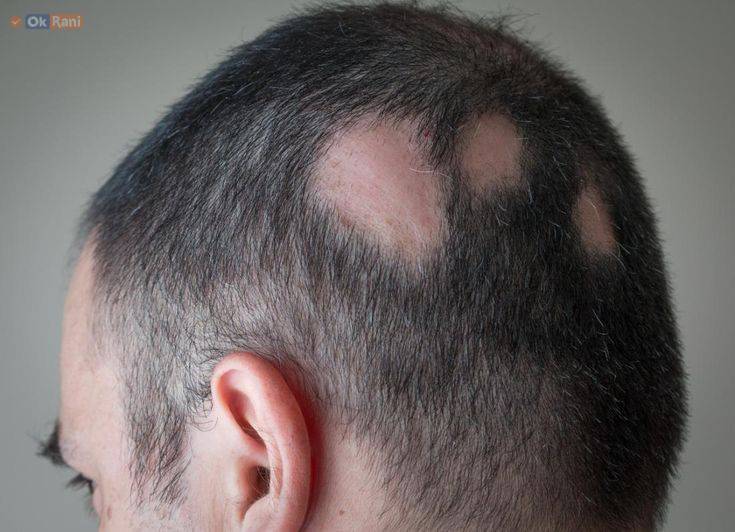
Alopecia areata is an autoimmune condition where the immune system mistakenly attacks hair follicles, causing hair to fall into small, round patches.
4. Traction Alopecia
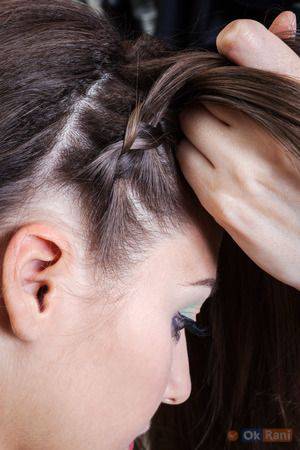
Traction alopecia results from excessive tension on hair follicles, often due to tight hairstyles or hair extensions.
Common Causes of Hair Loss
Understanding the causes of hair fall is crucial in finding effective treatments. Here are some common factors contributing to hair fall.
- Genetics: Genetics plays a significant role in androgenetic alopecia. If your family has a history of hair fall, you might be more susceptible to it.
- Hormonal Imbalances: Changes in hormones, like those during pregnancy, menopause, or thyroid issues, can cause hair fall.
- Stress: Persistent stress can interfere with the hair growth process, resulting in hair fall.
- Nutritional Deficiencies: A diet lacking essential nutrients, especially iron and protein, can contribute to hair fall.
- Medical Conditions: Certain medical conditions, like alopecia areata and lupus, can result in hair fall.
- Medications: Some medications, including those for cancer, depression, and high blood pressure, may have hair fall as a side effect.
- Hairstyling Practices: Excessive heat, tight hairstyles, and the use of harsh chemicals can damage hair and lead to hair fall.
Symptoms of Hair Loss
Recognizing the signs and symptoms of hair fall is vital for timely intervention and effective treatment. Here’s a more detailed explanation of these symptoms.
- Thinning Hair:
One of the initial signs of hair fall is the gradual thinning of hair. You might notice that your hair doesn’t have the same volume it once did. This is often more noticeable around the crown or on the top of the head. The hair might become thinner and less full. - Bald Spots:
Hair fall can manifest as small, round, or oval bald spots on the scalp. These areas may be completely devoid of hair or have very fine, nearly invisible hair. Alopecia areata, an autoimmune condition, often causes such bald patches. - Excessive Hair Shedding:
Another common symptom of hair fall is excessive hair shedding. When you brush, comb, or wash your hair, you may notice a significant amount of hair in the shower drain or on your hairbrush. This can be particularly alarming, and it’s essential to distinguish between normal daily shedding and excessive loss. - Receding Hairline:
In men, receding hairlines are a typical sign of male pattern baldness. The hairline gradually moves backward, creating the characteristic “M” shape. This type of hair fall usually starts at the temples and progresses towards the crown. - Widening Part:
Women may observe a widening part as a sign of hair fall. Instead of a distinct and narrow part in the hair, the part may become wider, exposing more of the scalp. - Changes in Hair Texture:
Hair that is actively undergoing loss may appear different in texture. It can become brittle, finer, and less vibrant in color. - Visible Scalp:
As hair fall progresses, you may notice that your scalp becomes more visible through the remaining hair. This is especially evident in bright lighting conditions. - Itchiness or Scalp Irritation:
Some individuals experience itchiness or discomfort on the scalp, often associated with hair fall. This can be due to inflammation or other scalp conditions related to the hair fall process.
How To Stop Hair Fall?
While not all types of hair fall can be prevented, there are steps you can take to reduce the risk.
- Diet and Nutrition: A well-rounded diet packed with essential vitamins and minerals can encourage robust hair growth.
- Stress Management: Practicing stress-reduction techniques, such as meditation and yoga, can help prevent stress-related hair fall.
- Proper Hair Care: Using gentle hair care practices and avoiding harsh styling can protect your hair from damage.
Hair Loss Treatment
Numerous treatments are available to address hair loss. These treatments aim to stimulate hair growth, slow down hair loss, or provide coverage for bald areas. Some of the common options include.
Topical Medications:
Topical solutions like minoxidil can promote hair growth and slow down hair loss.
Oral Medications:
Prescription medications like finasteride can help reduce hair loss and stimulate regrowth.
Hair Transplantation:
Hair transplantation involves the transfer of hair follicles from one part of the body to areas with thinning or no hair.
Laser Therapy:
Low-level laser treatment can activate hair follicles and encourage hair to grow.
Platelet-Rich Plasma (PRP):
PRP Injection therapy includes injecting platelet-rich plasma into the scalp to spark hair growth.
Natural Remedies for Hair Fall:
In addition to medical treatments, there are natural remedies that may help improve the condition of your hair. These include the use of essential oils, scalp massages, and aloe- vera treatments.
Conclusion
Hair loss can be a challenging issue, but with the right knowledge and treatment, it is manageable. Whether your hair loss is due to genetics, stress, or other factors, there are effective treatments available to address the problem. Remember that seeking professional advice is crucial in finding the best solution for your specific condition.
| FAQs – Hair Loss |
1. Which Vitamin Deficiency Causes Hair Fall?
Vitamin deficiencies, particularly deficiency of vitamin D, vitamin B7 (biotin), and iron, can lead to hair loss.
2. How can I prevent hair loss naturally?
Maintain a balanced diet and practice stress management. Avoid tight hairstyles, use gentle hair care, and consider scalp massages and aloe vera.
3. How to stop hair fall immediately?
To address hair fall quickly, avoid harsh hair treatments, maintain a balanced diet, and consult a healthcare professional for personalized solutions.

